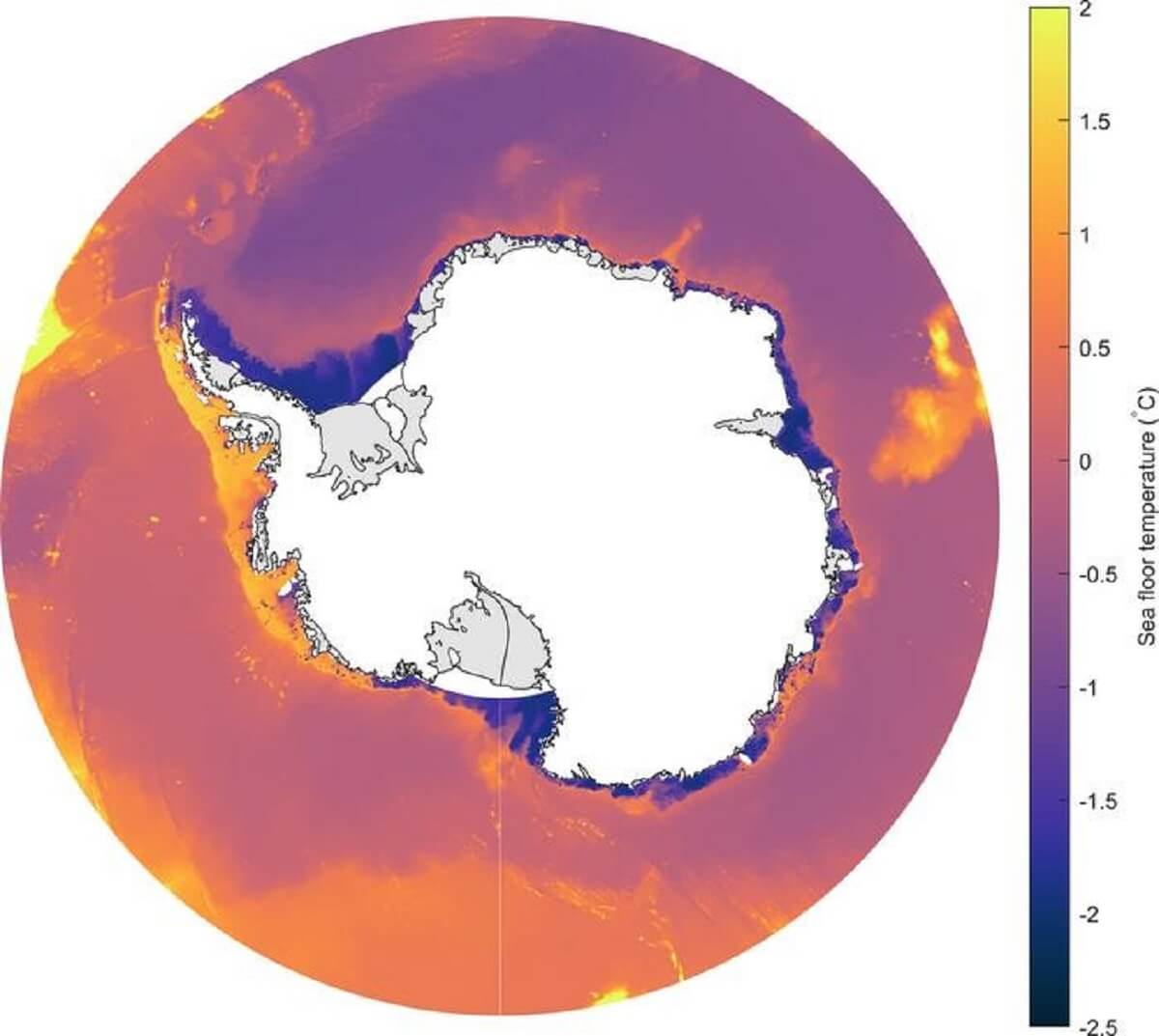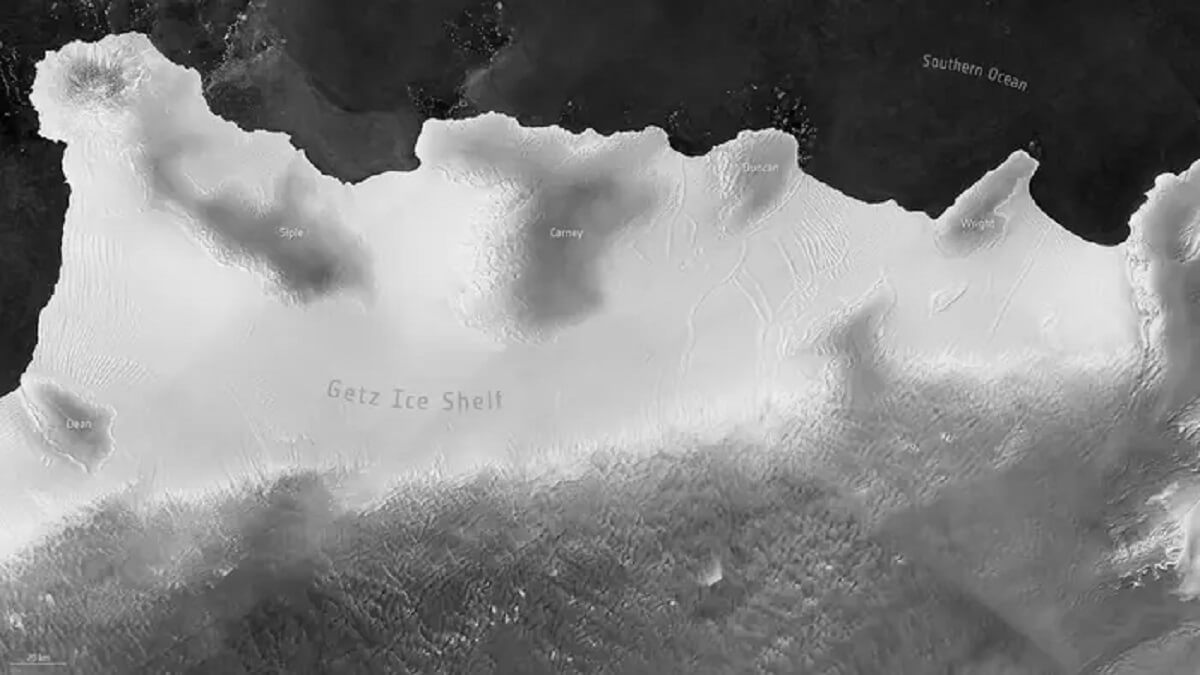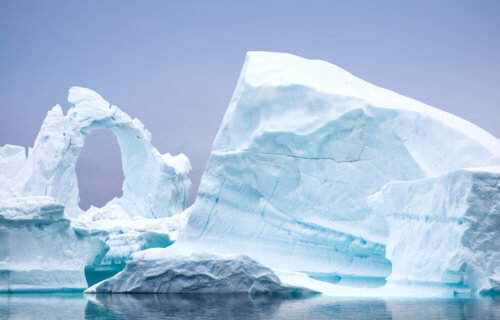LEEDS, United Kingdom — Antarctica’s melting ice shelves have released approximately 66.9 trillion tons of freshwater into the oceans over the past 25 years, scientists say. Researchers from the University of Leeds determined that nearly 67 trillion tons of ice have melted into the ocean during this period. However, 59 trillion tons of ice were added back to the ice shelves, resulting in a net loss of 7.5 trillion tons.
They found that the ice shelves on Antarctica’s western side were particularly affected, attributing human-induced global warming as the probable cause.
Out of the 162 ice shelves surrounding Antarctica, 71 have decreased in volume from 1997 to 2021. The study also reveals that the majority of ice shelves on the western side of Antarctica have experienced loss, while those on the eastern side largely remained unchanged or even grew in volume.
The team analyzed over 100,000 satellite radar images, providing a comprehensive evaluation of the ice shelves’ “health”. The potential loss or even reduction of these ice shelves could have significant implications for both Antarctica’s ice system and global ocean circulation, impacting the massive “conveyor belt” responsible for transporting nutrients, heat, and carbon throughout the polar ecosystem.

“There is a mixed picture of ice-shelf deterioration, and this is to do with the ocean temperature and ocean currents around Antarctica,” says Dr. Benjamin Davison, the study’s lead from the University of Leeds, in a media release. “The western half is exposed to warm water, which can rapidly erode the ice shelves from below, whereas much of East Antarctica is currently protected from nearby warm water by a band of cold water at the coast.”
Antarctica experiences different currents and winds on its western and eastern sides. The western side is more susceptible to warmer waters that flow beneath the ice shelves.
“We expected most ice shelves to go through cycles of rapid, but short-lived shrinking, then to regrow slowly,” Dr. Davison explains. “Instead, we see that almost half of them are shrinking with no sign of recovery.”
The researchers suspect global warming, arguing that if the changes were due to natural climate fluctuations, there would have been signs of ice regrowth, especially on the western ice shelves.
Ice shelves, which are extensions of the continental ice sheet, float on the surrounding seas. They function as enormous barriers, regulating the speed at which glacier ice flows into the oceans. As these barriers diminish or weaken, the rate of glacial ice loss accelerates.

Significant ice losses were recorded on the Getz Ice Shelf, with a total of 1.9 trillion tons of ice lost during the study’s duration. Only five percent of this loss resulted from calving – the process where large ice portions detach and drift into the sea – with the remainder attributed to base melting. The Pine Island Ice Shelf saw a loss of 1.3 trillion tons, with about 450 billion tons due to calving and the remainder from base melting. Conversely, the Amery Ice Shelf on Antarctica’s eastern side gained 1.2 trillion tons, attributed to its colder surrounding waters.
This freshwater influx can dilute the salty ocean water, altering its density and potentially disrupting the global ocean conveyor belt – a critical component for global ocean circulation.
A separate study in the journal Nature Climate Change suggests that this disruption may already be in progress.
“We tend to think of ice shelves as going through cyclical advances and retreats,” says Professor Anna Hogg, a co-author of the study. “Instead, we’re witnessing consistent losses through melting and calving. With 48 shelves losing over 30% of their original mass in just a quarter-century, it’s clear evidence of Antarctica’s response to a warming climate.”
The research is published in the journal Science Advances.
You might also be interested in:
- Antarctica Is Missing A Chunk Of Sea Ice Bigger Than Greenland – What’s Going On?
- Jaw-dropping photos show fiery skies over Antarctica caused by aftereffects of Tongan volcanic eruption
- Climate change special? Many tourists are going to Antarctica as a ‘last chance destination’
South West News Service writer Jim Leffman contributed to this report.


Atmospheric heat causes global warming! Read my web site at solutionstoglobalwarming.com to see my theory about why jet planes and rockets are the main cause of global warming, which started in the 1950’s when jet planes and rockets of all kinds were first used. Humans have got to stop flying jet planes and instead go back to flying propeller airplanes only and stop flying rockets of all kinds. Details on my web site.
Back in the 50s I refused to let my 5 boys play football. I upset my family. Strangely they have followed the process. They actually thanked me. I am not a dr. But had many hours of training about head injuries
I thank Dr. Brown from UMASS. He taught ancient history and first aid.
That’s definitely not dandily!
It’s about time
This is why Trump should not be relected as president he doesn’t believe in Global warming